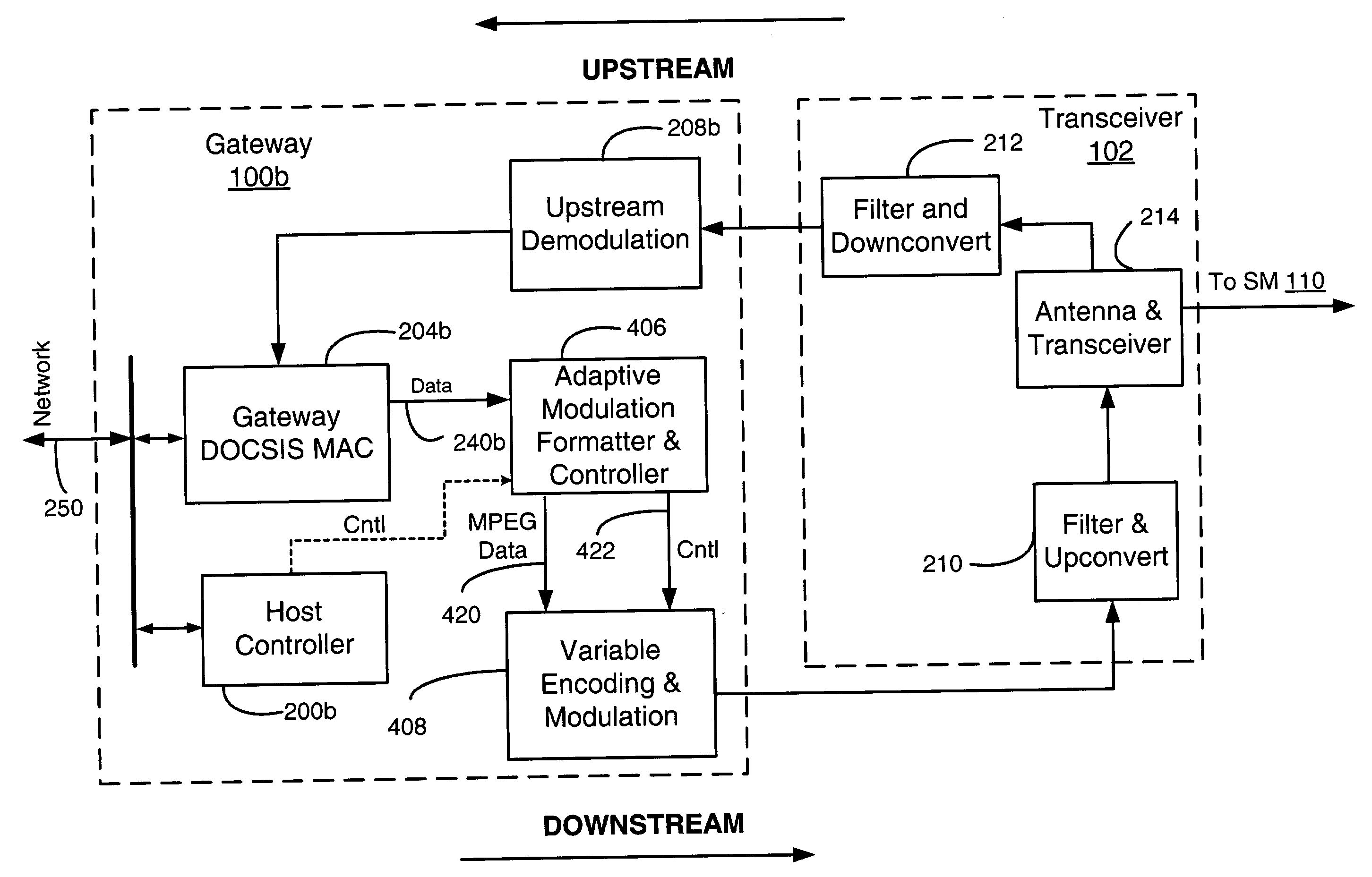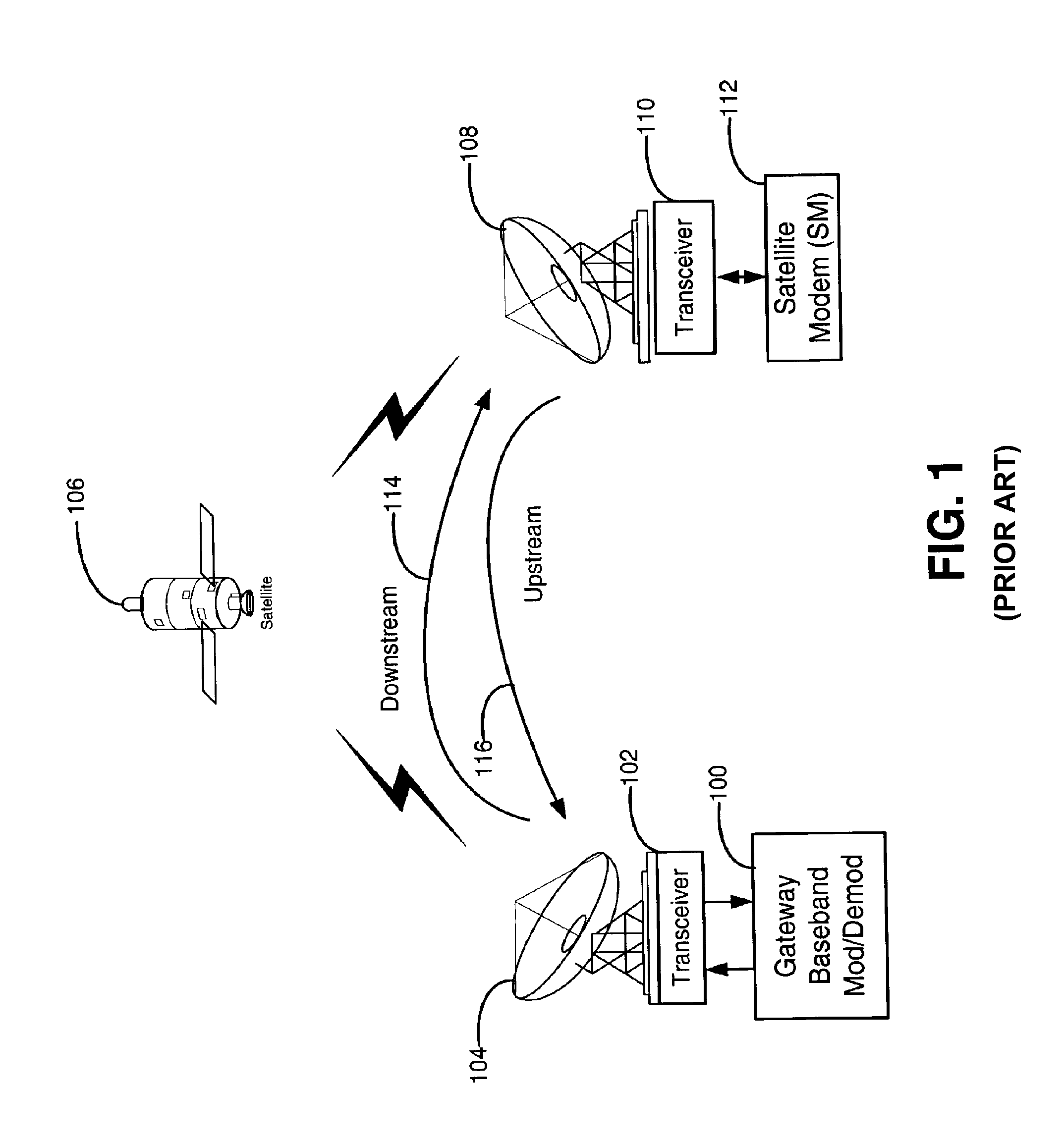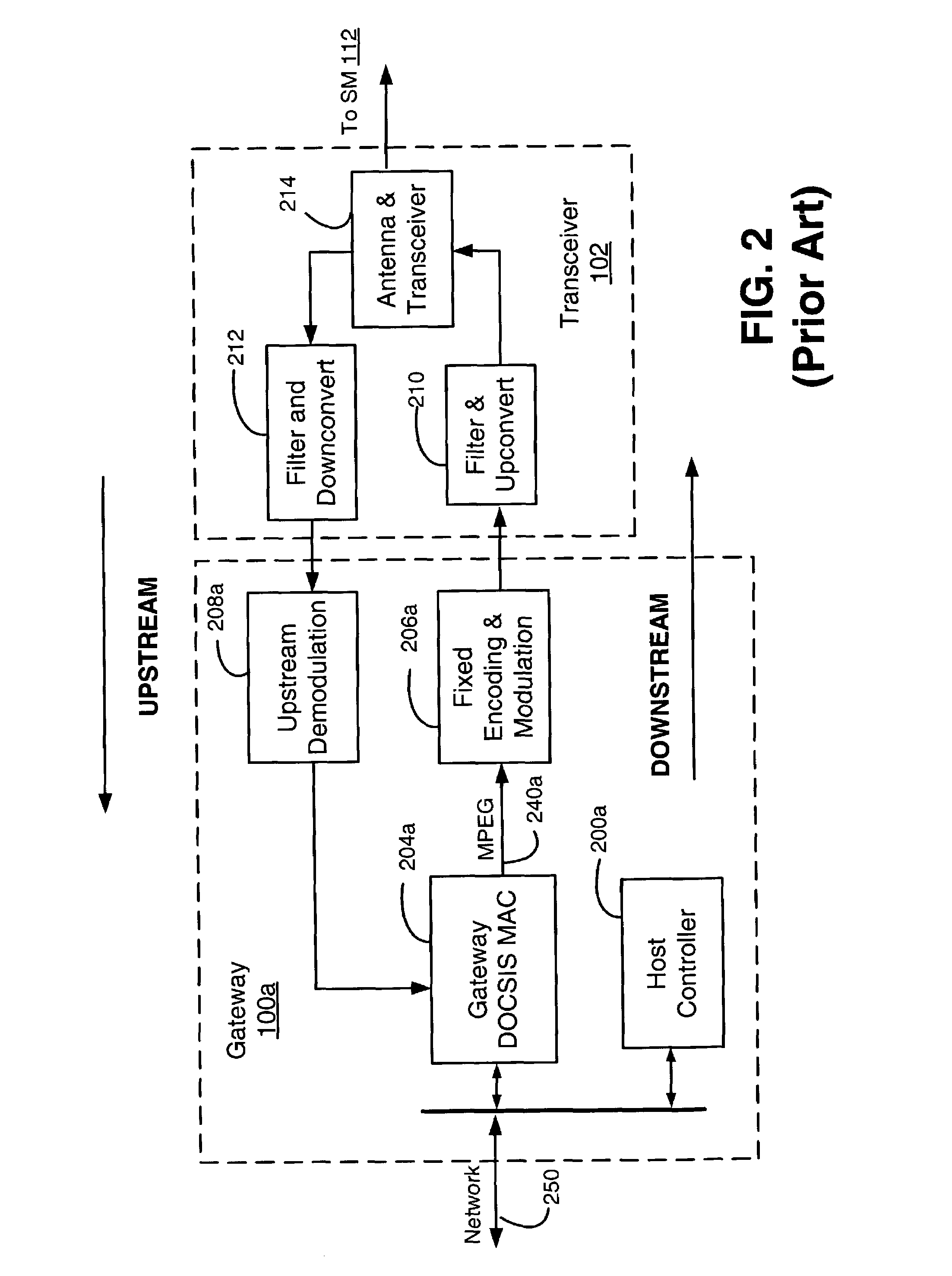Downstream time domain based adaptive modulation for DOCSIS based applications
a time domain and adaptive modulation technology, applied in the field of broadband communication systems, can solve the problems of degrading the signal power level (and thus snrs) received by individual subscribers, affecting the service life of subscribers, so as to achieve the effect of improving channel capacity, snr, and bandwidth efficiency
- Summary
- Abstract
- Description
- Claims
- Application Information
AI Technical Summary
Benefits of technology
Problems solved by technology
Method used
Image
Examples
Embodiment Construction
[0037]FIG. 4 is a block diagram illustrating the processing blocks of an embodiment of a satellite gateway (SG) 100b that incorporates the Downstream Adaptive Modulation (DS-AM) method and apparatus of the invention. The SG 100b includes an adaptive modulation and formatting and control (AMFC) stage 406 that receives and processes the DOCSIS encapsulated traffic received from the MAC processing block 204b. Interface 240b could be a MPEG data stream compliant with the DOCSIS downstream transmission convergence sublayer, or it could have an alternative format. The SG 100b also includes a variable encoding & modulation stage 408, which is a modulator that is capable of having its modulation type and FEC encoding parameters dynamically controlled on a QB by QB basis.
[0038]FIG. 5 illustrates a block diagram of the AMFC block 406 of FIG. 3. The host controller 200b receives downstream signal quality information for each of the particular SMs 112b over the upstream channel. The SM 112b is ...
PUM
 Login to View More
Login to View More Abstract
Description
Claims
Application Information
 Login to View More
Login to View More - R&D
- Intellectual Property
- Life Sciences
- Materials
- Tech Scout
- Unparalleled Data Quality
- Higher Quality Content
- 60% Fewer Hallucinations
Browse by: Latest US Patents, China's latest patents, Technical Efficacy Thesaurus, Application Domain, Technology Topic, Popular Technical Reports.
© 2025 PatSnap. All rights reserved.Legal|Privacy policy|Modern Slavery Act Transparency Statement|Sitemap|About US| Contact US: help@patsnap.com



